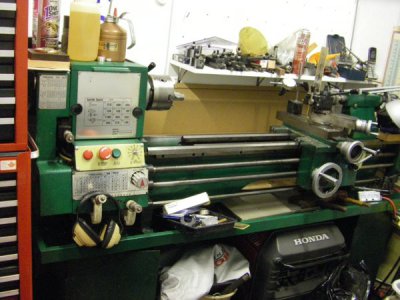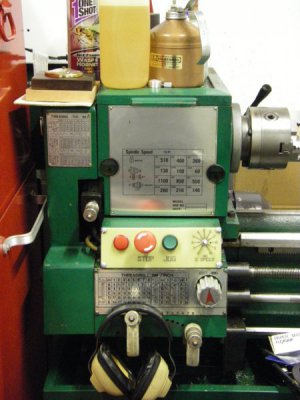I know nothing about these lathes but, in general, I have some suggestions.
First, a lathe is not a complicated machine. Well, it is but it isn't difficult to work on. There is a logic to how things go together and a parts breakdown goes a very long way to make sure you don't get lost. See if you can find one. For stuff outside of the headstock, I would just take pics as you go and disassemble anything that needs cleaning and adjusting.
For cleaning, I prefer the least toxic and most readily available stuff. Kerosene or mineral spirits cleans well and is cheap. Wear gloves, though. WD-40 also works well for cleaning a lot of stuff. I prefer synthetic Scotchbrite to remove grit and rust; I use the 000 synthetic steel wool 3M sells and the white non-scratching pad wherever possible. Coarser grits are available if needed. I used those blue shop paper towels over paint.
I suggest that anything that slides needs to be disassembled, cleaned, verified good and then lubed and adjusted. This includes the compound, cross feed and saddle. Nothing is complicated and you won't need to precisely adjust anything except the gibs.
Your compound has tapered gibs; the round screw has a projection that fits into a slot on the gib and as you turn the screw it will move the gib in or out. Adjust to a sliding fit and no play.
I would also break down the saddle and clean everything up so you can inspect stuff. You'll find chips, hardened grease and maybe dry gears and screws. Now is the time to get it all apart, cleaned and lubed. For any screw or gear that is protected, grease usually works fine. For screws that are exposed, used oil. The manual will tell you which lubricant is appropriate. Most good lathes will have lube nipples in the necessary places; some for grease, some for oil. Usually, nothing has specified torque values on the saddle. Most everything is cast, however, so avoid really cranking down on anything. By the way, the saddle lock is just a bolt that threads into a plate. One end of the plate bears on the saddle casting and the other end bears underneath the ways. Simple to make the plate from 1/4" thick mild or stainless steel and you can either use a bolt or a Kipp adjustable lever.
For grease, I use Super-Lube. My Emco manual calls for Mobilgrease Special, which I have, but Super-Lube doesn't harden and I prefer that. For oil, I use DTE 25 Hydraulic Oil and for way oil, I use Vactra-2.
Your headstock bearings should be tapered roller bearings. To deal with that, you need the manual, sorry.
I agree that you need to find the bull gear/s if you can. The first time you thread to a shoulder on a coarse-pitched screw, you will appreciate them.
Hope this helps. Can't help with the specific pulley stuff, sorry.


